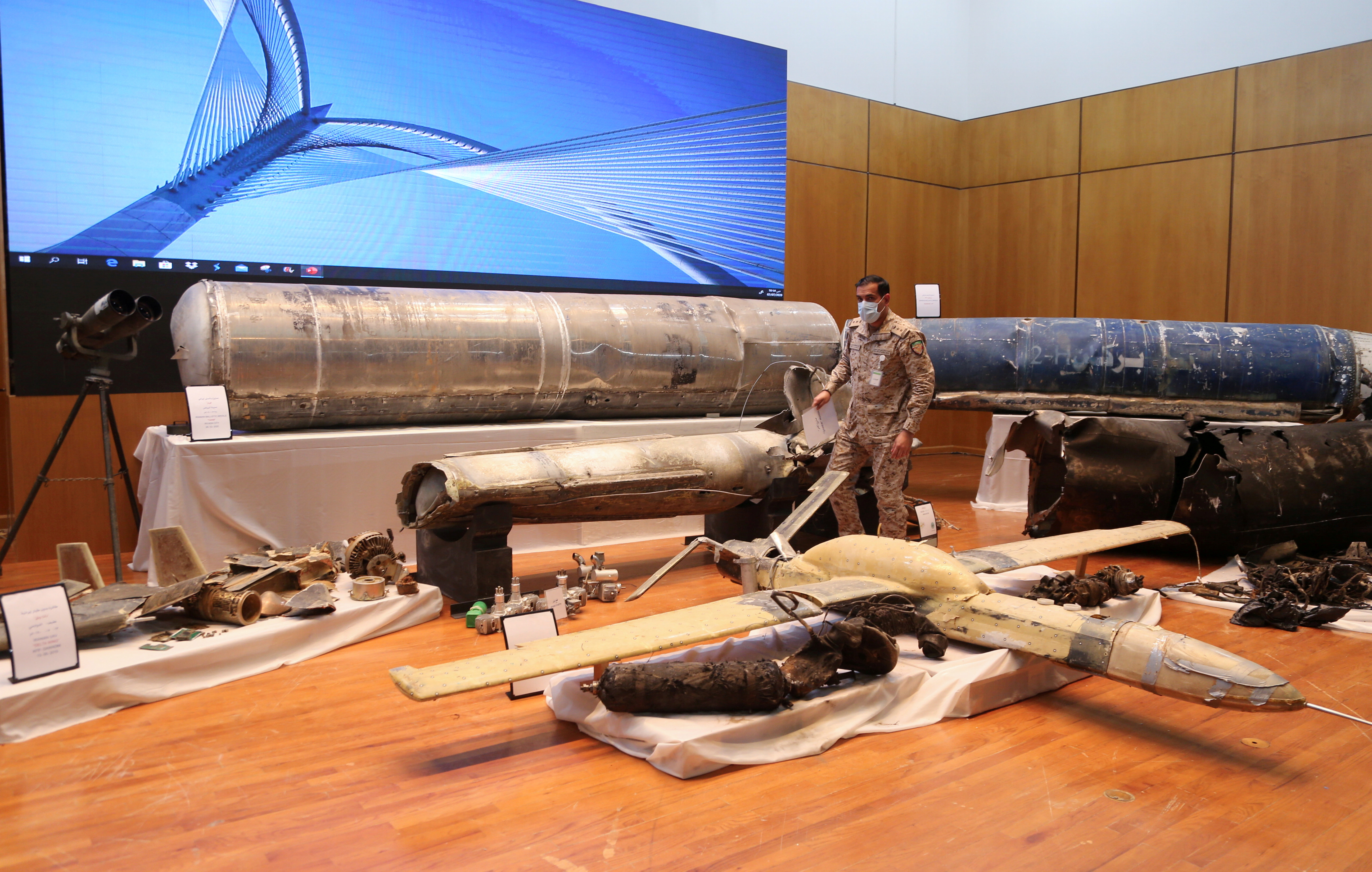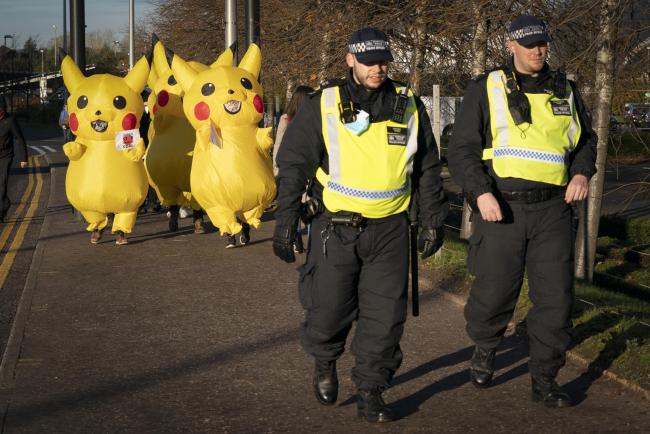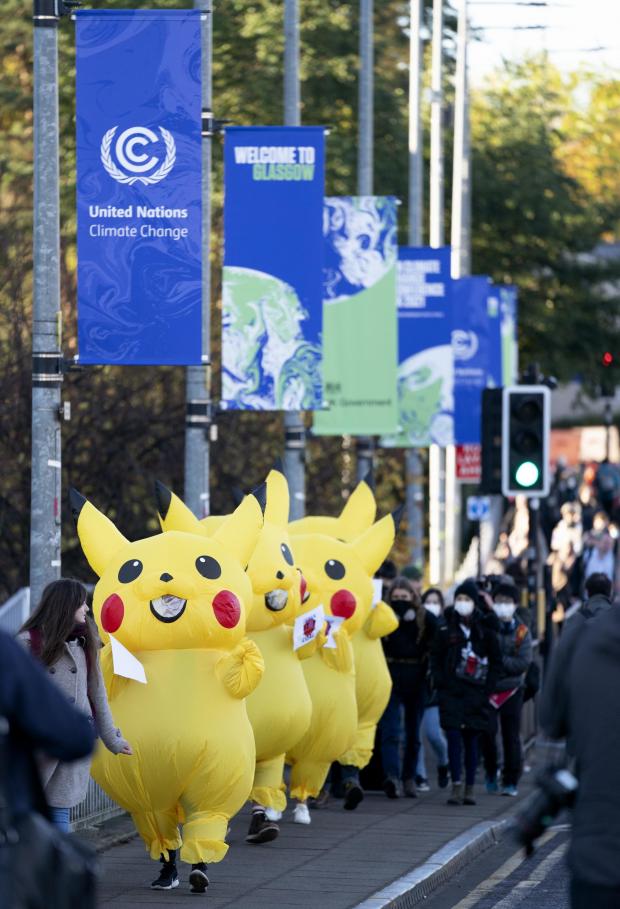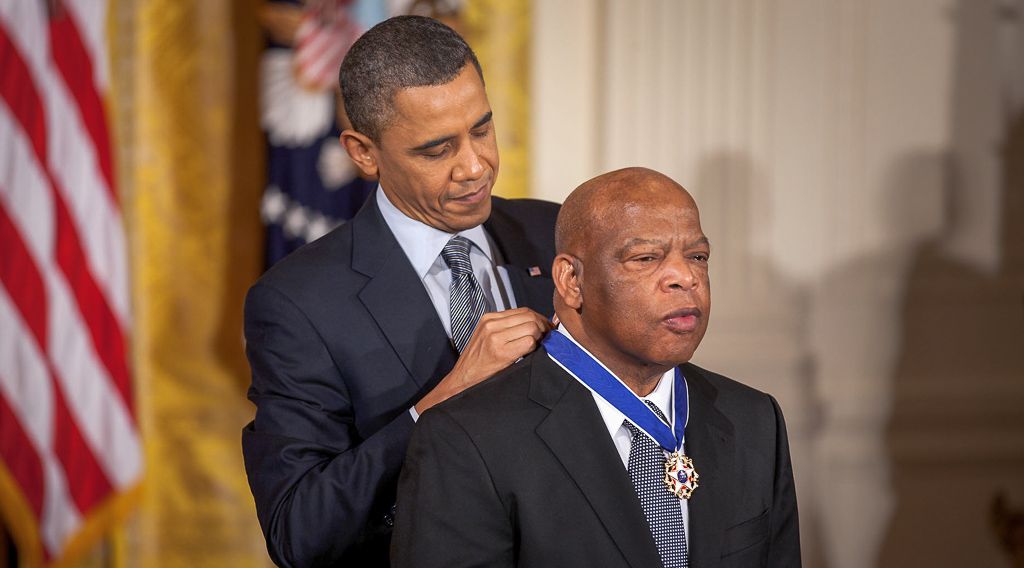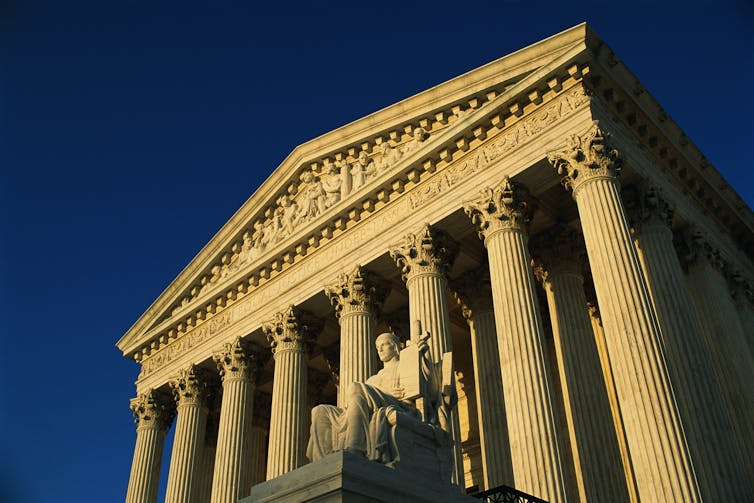In the coming second American Civil War -- which side are you on?
Chauncey Devega, Salon
November 04, 2021

Supporters of President Donald Trump storm the U.S. Capitol on January 6, 2021. (Tyler Merbler/WikiMedia Commons)
If there is a second American Civil War, which side would you choose? It may be wise to make that decision now, in the spirit of planning for the worst while hoping for the best.
A recent public opinion poll by the University of Virginia Center for Politics finds that a majority of Trump voters want to secede from the Union. Alarmingly, nearly as many Biden voters, 41 percent, also feel it may be "time to split the country." This is part of a larger pattern; other polls and research have come to similar conclusions.
It's important to resist false equivalence and superficial analysis here. It may be true that a large percentage of both Democrats and Republicans are willing to consider seceding from the United States, but their reasons and motivations are very different.
Today's Republican Party has, in practice, largely surrendered to neofascism and white supremacy — currents that were not far below its surface for many years. It has embraced and condoned the violence of the Jan. 6 insurrection, and has come very close to directly endorsing terrorism against its perceived political enemies.
For Republicans, America's multiracial democracy is anathema to their values and must be destroyed. Public opinion research has shown that tens of millions of white Republicans, especially Trump supporters, view Joe Biden as an illegitimate president who should be removed from power by whatever means necessary.
For decades the right-wing propaganda machine has used stochastic terrorism to radicalize its public toward ever more extreme views. In the Age of Trump, that has devolved into overt and direct appeals to violence in defense of an imagined "real" America. In practice, this has led to hate crimes and other acts of violence against nonwhite people, immigrants and other targeted groups.
This was to be expected: History shows that fascism in its various forms is inherently violent and destructive, both toward its opponents and members of its own movement.
When Democrats or progressives report a desire to secede from the country, they are seeking refuge and self-preservation. To suggest any equivalence between that desire and the overtly violent yearnings of the Republican-fascist movement is intellectually dishonest and morally bankrupt.
The prospect of a second American Civil War may seem wildly unlikely, or not even logistically feasible. But if it were to happen, such an outcome would not be based on empirical facts, reality or the complexities and nuances of public opinion polls.
A large percentage of Republicans and the larger white right actually believe that they are in an existential struggle for survival against Black and brown people and "illegal aliens" who want to "replace them," sinister "secularists" who want to outlaw Christianity, "critical race theory" aimed at brainwashing their children, a "liberal media" that deliberately lies to them, and a cabal of "elites" and "socialists" who are treasonous and determined to destroy the "real" America.
These right-wing white-identity fever dreams show no signs of breaking; if anything, the collective pathology is getting worse. Law enforcement and terrorism experts continue to warn that the country is at great risk of a violent right-wing insurgency inspired by the events of Jan. 6 and the Trump-Republican "Big Lie" about the 2020 election.
Wars begin for a wide range of reasons — often because of some miscalculation by one or more of the leaders and groups involved. Wars and other violent conflicts also happen because political leaders and other elites have talked themselves into a corner, leaving bloodshed as the only way out. Very often, civil war and sectarian violence have seemed impossible — until circumstances radically changed.
In an essay for Foreign Policy, Monica Toft explains how civil wars tend to happen, explaining that various factors are involved, including a history of previous internal conflict, "deepening cleavages" in society and a third element, "a shift from tribalism to sectarianism":
With tribalism, people begin to seriously doubt whether other groups in their country have the larger community's best interests at heart. In sectarian environments though, economic, social, and political elites and those they represent come to believe that anyone who disagrees with them is evil and actively working to destroy the community. Enemies of the state come to displace the loyal opposition, with those having been inside another tribe seen as the most disloyal. It's akin to how some religions treat apostates and infidels. Often, it is apostates, the former adherents of the faith, that are targeted more readily over infidels, those who had always been on the outside. It is hard not to see echoes of this dynamic at play as Republicans condemn other Republicans over their loyalty (or lack thereof) to former U.S. President Donald Trump.
Indeed, the United States now displays all three core elements that can lead to civil breakdown. If one described them — fractured elites with competing narratives, deep-seated identity cleavages, and a politically polarized citizenry — without identifying the United States by name, most scholars of civil war would say, "Hey, that country is on the brink of a civil war."
In a powerful essay published on Substack, Salon columnist Lucian K. Truscott IV offers a scenario for America's second Civil War, observing that the opposing forces "will not be conveniently costumed in blue and gray as they were in the 19th Century ... making it difficult to tell who is actually on which side":
There also won't be a discernible front line or front lines, making it hard to tell which side is holding what territory. This, along with the absence of uniforms, means that a whole lot of people will be killed by mistake. It's probably likely that the MAGA side will dress itself in various camo costumes as many of them did when the mob assaulted the Capitol in January, but Trump followers aren't the only people in this country with camouflage hunting clothing. So if you shoot someone wearing camo assuming he or she is on the MAGA side, you just might be shooting someone on your side. Combatants won't be wearing "dog tags" marking them as on one side or the other, making the identification of dead bodies difficult. Is this guy one of ours, or one of theirs?
Truscott concludes with a series of terrifying possibilities:
Perhaps the grimmest prospect of all will be the sub-wars that break out within the bigger Civil War. Every prejudice will be indulged. Racist whites will target Black people. Fundamentalist Christians might target "heathens" like Muslims and Jews and non-fundamentalist Christians. Ethnic divisions will exist within the greater sides that face-off. ...
A 21st Century American Civil War would make the struggles we are currently suffering over elections and distribution of wealth and between races and ethnicities seem like the good old days when we all got along. An American Civil War will mean that we don't merely disagree with one another or dislike each other. It will mean we kill each other.
None of us, and I mean none of us, has an inkling about how horrible it would be. But if we are to have a future of any kind whatsoever, we'd better get more of a clue than the woman in the MAGA hat in Iowa who seemed to so casually look forward to a Civil War between her side and the side she was told to hate. Who you hated and why will be hard to remember when death comes to your door.
What role would Donald Trump play in such a conflagration? In a recent essay for TomDispatch, historian Alfred McCoy offers these observations:
Whether it's a poor country like the Philippines or a superpower like the United States, democracy is a surprisingly fragile construct. Its worst enemy is often an ousted ex-president, angry over his humiliation and perfectly willing to destroy the constitutional order to regain power.
No matter how angry such an ex-president might be, however, his urge for a political coup can't succeed without the help of raw force, whether from a mob, a disgruntled military, or some combination of the two….
So, in 2024, as the continuing erosion of America's global power creates a crisis of confidence among ordinary Americans, expect Donald Trump to be back, not as the slightly outrageous candidate of 2016 or even as the former president eager to occupy the White House again, but as a militant demagogue with thundering racialist rhetoric, backed by a revanchist Republican Party ready, with absolute moral certainty, to bar voters from the polls, toss ballots out, and litigate any loss until hell freezes over.
And if all that fails, the muscle will be ready for another violent march on Washington. Be prepared, the America we know is worsening by the month.
There are many expert voices who are sounding the alarm about the potential of a second American Civil War, and marshaling reasonably evidence why it likely will not happen.
But even the fact that so many public voices, and so many ordinary Americans, find themselves in a moment where such an eventuality must be seriously considered indicates how dire the country's democracy crisis really is.
At its core, these discussions of a possible second American Civil War reveal that the rise of Trumpism, and the full-on embrace of fascism by the "conservative" movement reflect a nation in existential crisis.
The distinction between "nation" and "country" is critical here. A country is an agreed-upon set of laws and governing institutions, but a nation is the symbols, ideas, stories, shared values and beliefs and other intangibles that give a people a sense of community and shared destiny that is distinct and different from other people in other places.
Trump World and the MAGAverse, and those fellow travelers who have pledged loyalty to the Republican-fascist movement, have a fundamentally different conception of the nation than do other Americans. Who "owns" the country? Who are its rightful heirs? Do some Americans have a special and privileged birthright status as compared to other Americans?
If America succumbs to a second civil war or other widespread political violence, the answers to those questions will become the dividing line. As the truism goes, no one hates like family. The American people — that is, our American family, which has endured, with considerable difficulty, for close to 250 years — may soon be reminded of that truth on a brutal massive scale.
